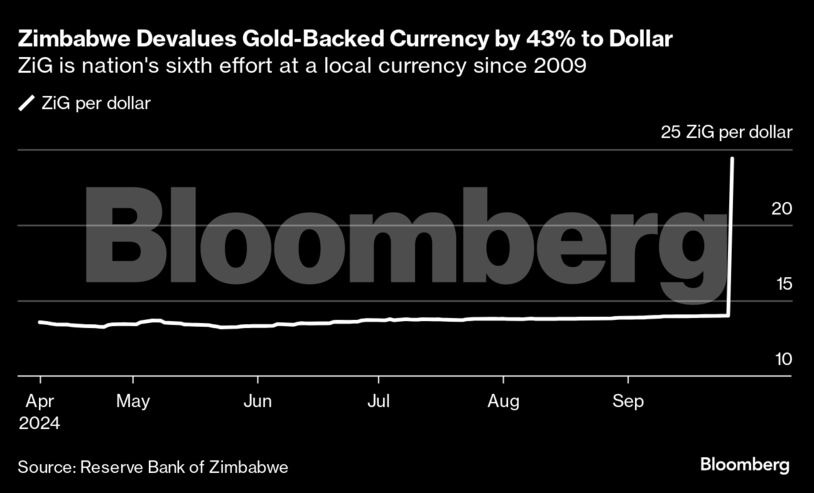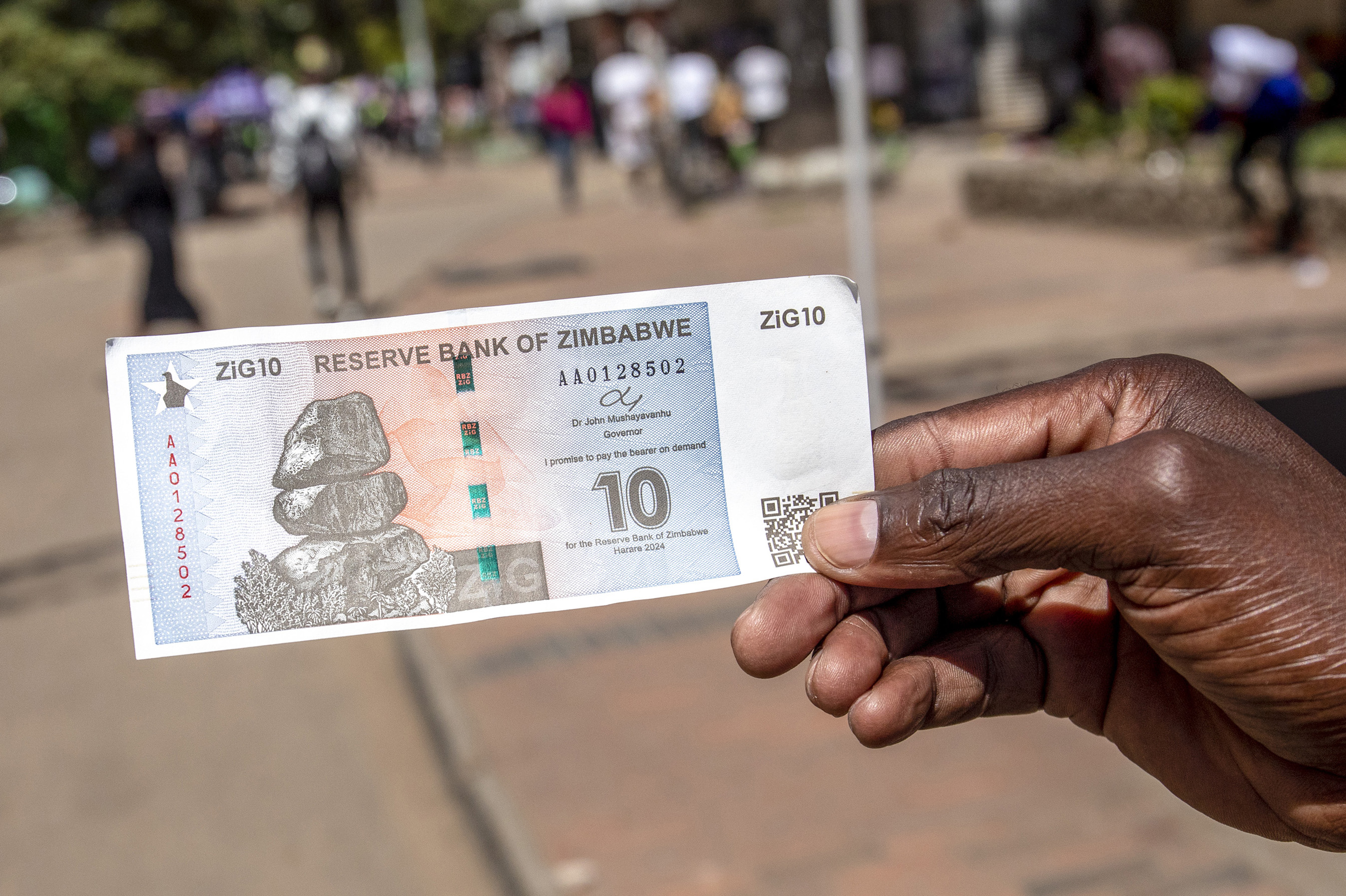The central bank’s monetary policy committee did not explicitly confirm if it was devaluing the ZiG. But Governor John Mushayavanhu said it was taking a number of steps to combat inflation, including allowing “greater exchange rate flexibility, in line with the increased demand for foreign currency in the country.”
Monthly inflation quickened to 5.8% in September from 1.4% in August.
The ZiG, backed by the southern African nation’s gold and hard currency reserves, was introduced in early April to replace the Zimbabwean dollar, which had lost around 80% of its value since the start of the year.
The sixth attempt to stand up a local currency since 2009 was immediately met with doubt from Zimbabweans, who have bitter memories of how previous local currencies had failed.

Those experiments, undermined by the central bank printing money to fund government borrowing, stoked hyperinflation that wiped out savings and drove the economy to the US dollar, which remains the main unit of exchange.
Mushayavanhu promised that the lessons from past failures had been learned and the monetary authority would not print more ZiG than were backed by reserves. But analysts cautioned the new currency would battle until Zimbabwe’s underlying challenges are fixed.
The nation has lacked access to global capital markets since 1999 after defaulting on its debts. It’s also still trying to restore its international standing, despite qualms in western capitals about its human rights record. While the US has lifted sanctions on some state-owned firms, it’s applied them to President Emmerson Mnangagwa and other top officials.
“The devaluation obviously is just catching up to what has already happened on the market,” said Harare-based economist Farai Mutambanengwe. “What is actually required is to remove these restrictions and allow the exchange rate to be market determined so that players can set whatever rates they think are applicable.”
| Read more on Zimbabwe: |
|---|
| Meet Zimbabwe’s Gold-Backed Shot at a Stable Currency: QuickTake Zimbabwe September Prices Rose 5.8% From a Month Earlier Zimbabwe Currency Chaos Deals Central Banker His First Test Zimbabwe Gold-Backed ZiG Hits Longest Losing Streak Since Debut Zimbabwe Warns Against Protests as It Detains Rights Activists |
Pressures on the ZiG began to build in August amid rising food import prices due to an El Niño-induced drought, and as lower commodity prices dented dollar earnings for mineral exports.
Still, the central bank voiced confidence that its actions on Friday would yield results. Its other measures include raising reserve requirements on local and foreign currency deposits to 30%, from 15% and 20% respectively, and capping the amount of foreign currency an individual can take out of the country to $2,000 from $10,000.
“The MPC is convinced that the above measures will go a long way in addressing the emerging exchange rate risks,” he said. “The MPC will remain vigilant to any emerging risks to ensure continued macroeconomic stability.”




 A bank customer displays a ten ZiG banknote in a street in Harare, Zimbabwe, on Tuesday, April 30, 2024. The southern African nation that's had bouts of hyperinflation and triple-digit inflation introduced ZiG, short for Zimbabwe Gold on April 5.
A bank customer displays a ten ZiG banknote in a street in Harare, Zimbabwe, on Tuesday, April 30, 2024. The southern African nation that's had bouts of hyperinflation and triple-digit inflation introduced ZiG, short for Zimbabwe Gold on April 5.